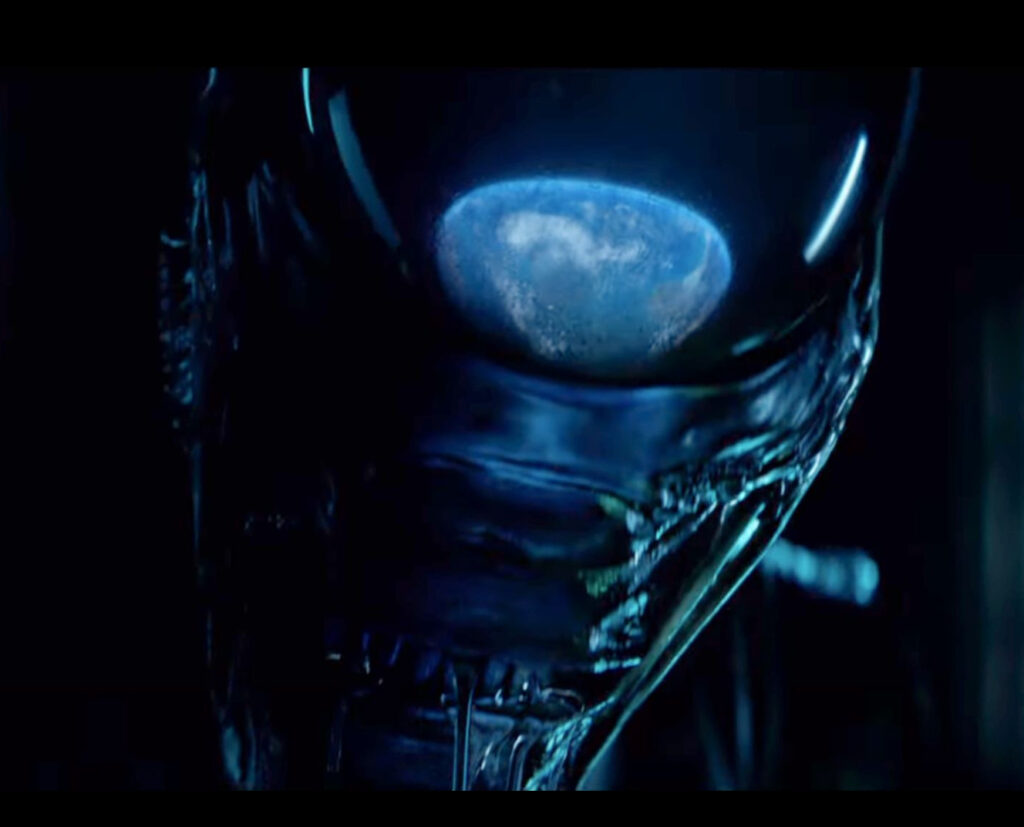The Alien franchise has always been a benchmark for sci-fi horror, known for its iconic xenomorphs, tense atmospheres, and innovative use of practical effects. The latest teaser for Alien: Earth, Noah Hawley’s upcoming FX series set before the events of Ridley Scott’s 1979 masterpiece, has reignited excitement among fans by confirming a bold choice: the series will forego CGI for its xenomorphs, embracing practical effects instead. Slated for release in 2025, Alien: Earth aims to recapture the visceral terror that made the original Alien a cultural phenomenon.
This decision is not just a creative choice but also a statement about the direction of the Alien franchise in an era dominated by CGI-heavy productions.
A Return to Practical Effects: Why It Matters
The decision to use practical effects for Alien: Earth is a deliberate nod to the roots of the franchise. Ridley Scott’s Alien (1979) and James Cameron’s Aliens (1986) relied heavily on practical effects, from H.R. Giger’s grotesque xenomorph designs to intricate sets that made the Nostromo and LV-426 feel tangible and claustrophobic. These practical effects were instrumental in immersing audiences in the Alien universe, making the terror palpable and the monsters unforgettable.
In recent years, CGI has become the go-to tool for creating alien creatures and futuristic worlds. While CGI offers unparalleled flexibility, it often struggles to evoke the same sense of physicality and realism as practical effects. By rejecting CGI for the xenomorphs, Noah Hawley is signaling a return to the franchise’s tactile horror roots.
Immersion and Authenticity
Practical effects ground the horror in reality, giving actors something tangible to react to and the audience a sense of physical immediacy. When Sigourney Weaver’s Ripley faced off against the xenomorph in Alien, the sweat, the drool, and the terror felt real because the creature was real—at least on set. This authenticity is something Hawley aims to replicate in Alien: Earth, immersing viewers in a world where the terror feels unnervingly close.
The Xenomorph: A Creature Made for Practical Effects
The xenomorph is one of the most iconic monsters in cinematic history, and its design lends itself perfectly to practical effects. Giger’s biomechanical aesthetic—combining organic and industrial elements—thrives in the realm of physical sculpture and animatronics. In the original Alien, the xenomorph’s slimy, skeletal frame and horrifyingly human-like movements were brought to life by Nigerian artist Bolaji Badejo, who wore an elaborate suit that blurred the line between man and monster.
Noah Hawley’s decision to stick with practical effects ensures that the xenomorph retains its unsettling physicality. Reports suggest the production has enlisted leading special effects teams to craft full-scale animatronics, puppets, and wearable suits. These techniques not only honor the creature’s legacy but also allow for creative innovations that stay true to its original design while enhancing its terror.
The Vision Behind Alien: Earth
Noah Hawley, known for his work on Fargo and Legion, has a reputation for blending psychological depth with striking visuals. His approach to Alien: Earth promises to expand the franchise’s narrative while staying faithful to its thematic core: the fragility of human existence against an unknowable, hostile universe.
Set before the events of Alien (1979), Alien: Earth explores the early encounters between humans and the xenomorph species. Hawley has described the series as “less of an action thriller and more of a psychological horror,” emphasizing tension, character development, and the slow-burn dread that defined the original film.
Themes of Corporate Greed and Hubris
In true Alien fashion, Alien: Earth delves into the familiar themes of corporate greed and human hubris. The series will reportedly explore how early Weyland-Yutani experiments with xenomorph biology set the stage for the catastrophic events of the original films. This focus on humanity’s role in its own destruction aligns perfectly with the franchise’s core message.
Reactions from the Cast and Crew
The cast of Alien: Earth includes a mix of established stars and rising talent, all of whom have expressed excitement about working with practical effects. In interviews, lead actress Sophia Boutella described the experience of interacting with animatronic xenomorphs as “intensely visceral” and “unlike anything I’ve done before.”
The production team has also shared insights into the challenges and rewards of working with practical effects. FX artist Tom Woodruff Jr., who worked on earlier Alien films, explained, “It’s harder, yes. But the payoff is worth it. When the creature is in the room with you, you feel its presence—and so does the audience.”
Balancing Tradition and Innovation
While the use of practical effects is a return to tradition, Alien: Earth isn’t entirely eschewing modern technology. Visual effects will still play a role in enhancing backgrounds, environments, and space sequences. However, the decision to ground the xenomorph in physical reality ensures that the creature remains the focal point of the horror, not a digital afterthought.
This balance between old and new exemplifies Hawley’s approach to the series. By blending practical effects with modern cinematic techniques, Alien: Earth can offer something fresh while remaining true to its roots.
A New Chapter in Sci-Fi Horror
Alien: Earth arrives at a critical moment for sci-fi horror. Recent successes like The Last of Us and Stranger Things have demonstrated the genre’s potential for blending spectacle with emotional depth. By prioritizing practical effects, Alien: Earth positions itself as a standout entry in the genre, promising a return to the visceral, character-driven horror that made the original Alien a masterpiece.
A Template for Future Productions
The decision to forgo CGI for the xenomorphs also serves as a reminder of the power of practical effects in an increasingly digital industry. If successful, Alien: Earth could inspire a wave of filmmakers to reconsider the role of practical effects in crafting immersive, emotionally resonant stories.
Anticipation and Legacy
As the 2025 debut of Alien: Earth approaches, anticipation is building among fans and critics alike. The teaser has sparked widespread excitement, with many praising the decision to embrace practical effects as a bold and respectful nod to the franchise’s origins.
For longtime fans, the return of the practical xenomorph is a promise that Alien: Earth will honor the legacy of Ridley Scott’s original vision. For newcomers, it’s an opportunity to experience the raw, unrelenting terror that defines the franchise.
Impression
By choosing to forgo CGI in favor of practical effects, Noah Hawley’s Alien: Earth is making a bold statement about the future of the Alien franchise. This decision not only honors the series’ legacy but also reaffirms the enduring power of practical effects in creating immersive and unforgettable cinematic experiences.
Set against the backdrop of a carefully crafted prequel narrative, Alien: Earth promises to deliver the kind of visceral horror and psychological depth that fans have been craving. If the teaser is any indication, 2025 could mark the beginning of a thrilling new chapter for Alien—one that bridges the past and the future in the most terrifyingly tangible way possible.
No comments yet.








